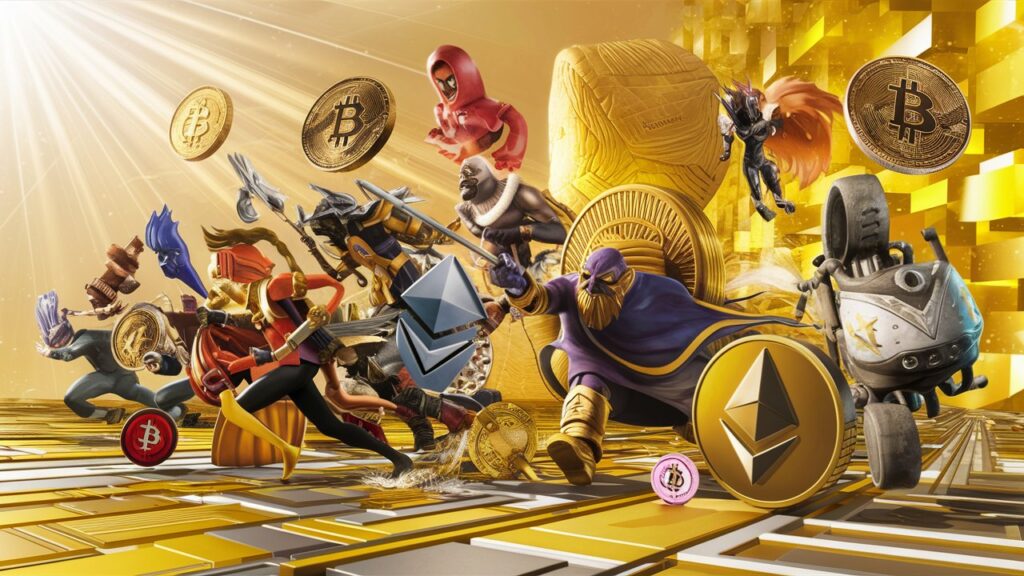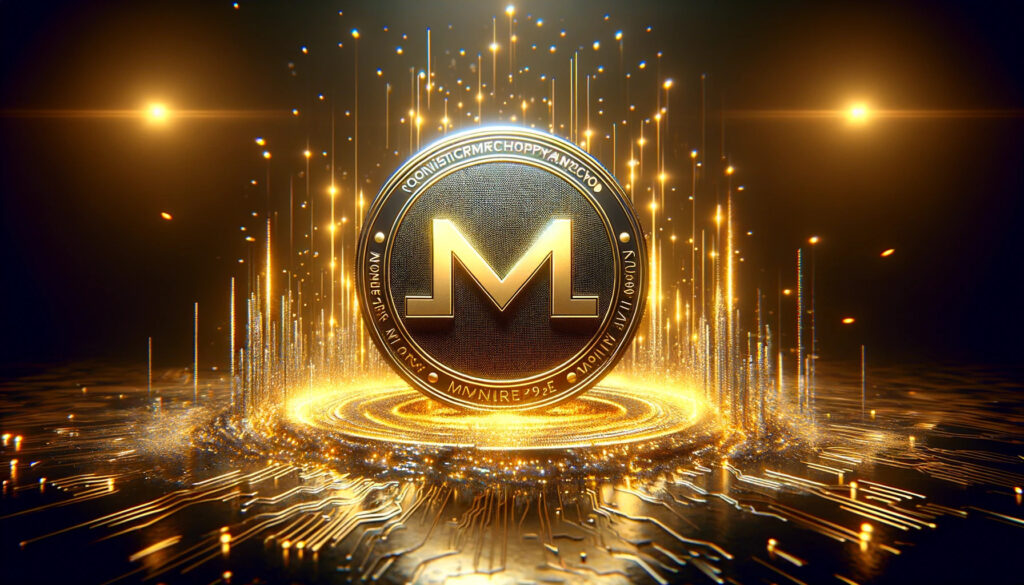
Solana: Essential Knowledge for Beginners
In the rapidly evolving landscape of cryptocurrencies, Solana has emerged as a standout name, drawing attention for its innovative technology and promising capabilities. As a beginner diving into the complexities of digital currencies, understanding Solana’s unique features, potential challenges, and opportunities is crucial. This article aims to shed light on Solana, offering a comprehensive overview suitable for those new to the cryptocurrency world.
What is Solana?
Solana is a highly efficient blockchain platform designed for decentralized applications (dApps) and crypto-currencies. It’s known for its incredible speed and scalability, which solves many issues faced by older blockchains like Bitcoin and Ethereum. Solana can process tens of thousands of transactions per second (TPS) at a fraction of the cost, making it an attractive platform for developers and investors alike.
Key Features and Technologies
- High Throughput and Scalability: At its core, Solana’s breakthrough lies in its innovative consensus mechanism, Proof of History (PoH), combined with Proof of Stake (PoS). This hybrid approach allows for greater scalability and speed without compromising security.
- Low Transaction Costs: Unlike Ethereum, which can suffer from high gas fees during peak times, Solana’s transaction costs are significantly lower, making it more accessible for users and developers.
- Growing Ecosystem: Solana hosts a wide array of dApps, spanning DeFi, NFTs, gaming, and more. Its ecosystem is rapidly expanding, offering various opportunities for users and developers.
Opportunities and Use Cases
Solana’s architecture provides a fertile ground for a multitude of applications:
- DeFi Platforms: With its high throughput and low fees, Solana is an ideal platform for decentralized finance (DeFi) applications, offering faster and more cost-effective transactions.
- NFT Marketplaces: The scalability of Solana supports high-volume NFT transactions, making it a preferred blockchain for NFT creators and collectors.
- Gaming and Metaverse: The blockchain’s speed and efficiency enable complex, real-time interactions in gaming and metaverse applications, paving the way for a new era of blockchain gaming.
Challenges and Risks
Despite its advantages, Solana is not without its challenges. The network has experienced several outages, raising concerns about its reliability. Additionally, as a relatively new platform, it faces the ongoing challenge of security threats and the need to maintain a competitive edge as the blockchain space evolves.
Investing in Solana
Investing in Solana, like any cryptocurrency, comes with its set of risks and rewards. Potential investors should consider the platform’s technological strengths, market position, and the overall volatility of the cryptocurrency market. Doing thorough research and considering long-term trends are crucial steps before making any investment.
Solana’s Consensus Mechanism: Proof of History and Proof of Stake
Solana introduces a novel consensus mechanism known as Proof of History (PoH), working in tandem with the established Proof of Stake (PoS). This combination is what sets Solana apart in terms of speed and efficiency.
- Proof of History (PoH): Unlike traditional consensus mechanisms that rely heavily on the synchronization of all nodes to validate transactions, PoH creates a historical record that proves that an event has occurred at a specific moment in time. This is achieved through a sequence of computations that can only be done in order, providing a verifiable timestamp. This innovation drastically reduces the need for communication between nodes about the time of transactions, thereby increasing throughput.
- Proof of Stake (PoS): Solana uses PoS for the finality of its consensus, wherein validators stake their SOL tokens as collateral to participate in the network governance. This not only secures the network but also incentivizes honesty and participation. The PoS layer works alongside PoH to ensure network security and decentralization.
The interplay between PoH and PoS allows Solana to process transactions at unprecedented speeds while maintaining a high degree of security and decentralization, making it a compelling choice for developers and users alike.
Security Measures
Security in the blockchain world is paramount, and Solana has implemented several measures to protect its network:
- Censorship Resistance: Solana’s architecture is designed to prevent any single point of failure, which makes it highly resistant to censorship and external attacks.
- Network Outages: In response to past network outages, Solana has taken steps to improve its network stability and resilience. These include enhancements to the validator software and network infrastructure to handle high transaction loads more effectively.
- Validator Diversity: Solana encourages a diverse range of validators by lowering the entry barriers and distributing network rewards equitably. This diversity helps to further secure the network against coordinated attacks.
Despite these measures, like any blockchain platform, Solana faces ongoing challenges in maintaining security, especially as it scales and attracts more attention from both users and potential attackers.
Comparative Analysis with Ethereum
Comparing Solana with Ethereum, the blockchain that currently dominates the dApp and DeFi space, offers insights into its competitive advantages and challenges:
- Speed and Scalability: Solana’s most significant advantage over Ethereum lies in its speed and scalability, capable of processing many more transactions per second at a fraction of the cost.
- Smart Contracts and dApp Development: Both platforms support smart contracts and dApps, but Solana offers a more cost-effective environment for developers due to lower transaction fees.
- Ecosystem and Adoption: Ethereum boasts a more extensive ecosystem with a larger number of dApps and a broader developer community. However, Solana is rapidly gaining traction, attracting developers and users with its high performance and low costs.
- Transition to Ethereum 2.0: Ethereum is in the process of upgrading to Ethereum 2.0, which will introduce Proof of Stake and shard chains to improve its scalability and reduce transaction fees. This upgrade could narrow Solana’s competitive advantages.
In conclusion, Solana’s unique consensus mechanism, commitment to security, and competitive position relative to Ethereum highlight its potential to play a significant role in the future of blockchain technology. While challenges remain, Solana’s approach to solving the blockchain trilemma of scalability, security, and decentralization presents a compelling case for its continued growth and adoption.
The Role of SOL Token in the Ecosystem
The SOL token serves multiple critical functions within the Solana ecosystem, acting as the linchpin that ties together the platform’s various components:
- Transaction Fees and Staking: SOL is used to pay for transaction fees and computational services on the Solana network. Additionally, it’s staked by validators as part of the Proof of Stake consensus mechanism, which helps secure the network and process transactions.
- Governance: Although Solana’s governance structure is evolving, SOL holders have a say in future upgrades and decisions affecting the network, aligning the platform’s direction with the interests of its community.
- Incentive Alignment: The distribution of SOL tokens to validators and developers incentivizes participation and innovation within the Solana ecosystem, ensuring its long-term viability and growth.
Understanding the multifaceted role of SOL is crucial for anyone looking to engage with the Solana platform, whether as a developer, investor, or user.
Solana’s Infrastructure and Developer Tools
Solana’s infrastructure and suite of developer tools are designed to lower the entry barrier for building decentralized applications, making it an attractive platform for developers:
- Anchor Framework: Anchor is a framework for Solana that simplifies smart contract development by providing a set of tools and pre-built contracts, enabling developers to build more complex and secure dApps efficiently.
- Solana Program Library (SPL): The SPL is a collection of on-chain programs that Solana developers can use as building blocks for their applications, similar to Ethereum’s ERC standards. These include token standards, staking programs, and more.
- Rust Programming Language: Solana’s primary smart contract language is Rust, known for its performance and safety. This choice attracts developers from diverse backgrounds, including those from the traditional software development world.
Future Roadmap and Updates
Solana’s roadmap is ambitious, focusing on further enhancing the network’s speed, scalability, and security. Key areas of development include:
- Scalability Improvements: Continuous upgrades to the network’s architecture to support more transactions per second and accommodate a growing number of users and applications.
- Enhanced Security Measures: Despite Solana’s robust security measures, ongoing work aims to fortify the network against potential threats and vulnerabilities, ensuring that it remains a secure platform for all users.
- Cross-Chain Interoperability: Efforts are underway to improve Solana’s interoperability with other blockchains, enabling seamless asset and data transfer across different ecosystems, which will further expand Solana’s utility and reach.
By focusing on these areas, Solana aims to solidify its position as a leading platform for decentralized applications and services, catering to the evolving needs of the blockchain community.
Exploring Solana reveals a platform that not only pushes the boundaries of blockchain technology but also offers a comprehensive ecosystem for developers and users. Its unique blend of speed, scalability, and security positions it as a significant player in the future of decentralized applications.
DeFi Ecosystem on Solana
The DeFi (Decentralized Finance) ecosystem on Solana is known for its rapid execution speeds and low transaction costs, making it an attractive alternative to other blockchain platforms. Here are key highlights:
- Serum: An innovative decentralized exchange (DEX) built on Solana that offers lightning-fast trades, near-zero fees, and a fully on-chain order book, providing an experience akin to traditional trading platforms.
- Raydium: An automated market maker (AMM) and liquidity provider built on the Serum DEX, offering high-speed transactions and pooled liquidity for a seamless trading experience.
- Solend: A decentralized borrowing and lending platform that leverages Solana’s speed and low transaction costs to offer competitive rates for users.
These platforms exemplify Solana’s capabilities in supporting high-volume, complex DeFi applications, enabling users to trade, lend, and borrow with unprecedented efficiency.
NFTs and Digital Assets on Solana
Solana has rapidly become a hub for NFTs (Non-Fungible Tokens), drawing artists, creators, and collectors with its high throughput and low fees:
- Metaplex: A protocol on Solana that powers the creation and sale of NFTs, enabling creators to launch their own customizable storefronts without relying on centralized platforms.
- Solanart and Magic Eden: Popular NFT marketplaces on Solana that offer a wide range of digital art, collectibles, and more, benefiting from the blockchain’s scalability to support vibrant and active trading communities.
The Solana ecosystem provides a fertile ground for NFT innovation, from gaming and digital art to music and beyond, showcasing the blockchain’s capacity to host diverse digital assets.
Solana’s Community and Developer Support
The strength of any blockchain platform lies not just in its technology but in its community and the support it offers to developers:
- Solana Foundation: Offers grants, resources, and support to developers to encourage innovation and growth within the Solana ecosystem.
- Hackathons and Events: Regular hackathons and community events foster a sense of camaraderie, encourage collaboration, and drive the development of new projects on Solana.
- Education and Resources: Through extensive documentation, tutorials, and developer tools, Solana actively lowers the barrier to entry for new developers, ensuring a steady growth of the ecosystem.
Solana’s commitment to community engagement and developer support has played a crucial role in its rapid growth, attracting a diverse range of projects and talent to the platform.
As we’ve explored the depths of Solana’s DeFi platforms, NFT marketplace, and the community that supports it, it’s clear that Solana is not just a blockchain but a burgeoning ecosystem poised for further growth and innovation.
For those eager to continue exploring Solana or any other topics in the world of cryptocurrencies and blockchain technology, the journey is as expansive as the technology itself. Whether you choose to dive deeper into blockchain development, explore other cryptocurrency platforms, or contribute to the vibrant communities around these technologies, the possibilities are limitless.
Conclusion
Solana represents a significant leap forward in blockchain technology, offering a scalable, efficient, and user-friendly platform that holds great promise for the future of decentralized applications. While challenges remain, its potential to reshape the digital landscape is undeniable. For beginners looking to explore the world of cryptocurrencies, Solana offers an exciting glimpse into the possibilities of blockchain technology.












